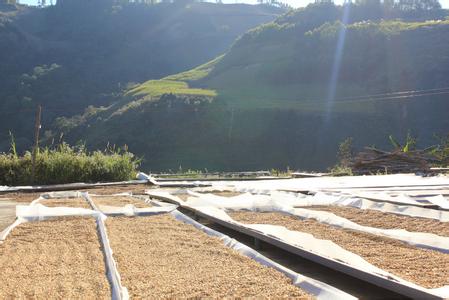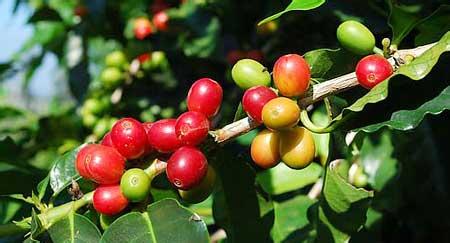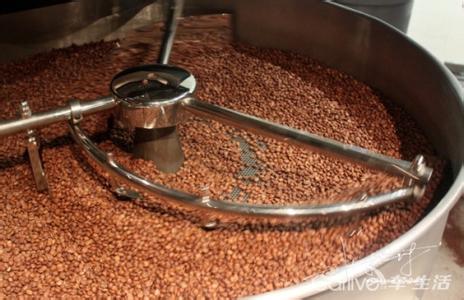A brief introduction to the grinding scale of Ethiopian coffee beans by taste treatment method
A brief introduction to the grinding scale of Ethiopian coffee beans by taste treatment method
Although the Ethiopian Yirgacheffe coffee is petite, it is gentle and delicate and sweet. As the hometown of coffee, thousands of years of planting history and processing tradition in Ethiopia have created high-quality washed Arabica beans. Light baking has unique sweet aromas of lemon, flowers and honey, soft acidity and citrus flavors, fresh and bright on the palate.
Growing in western Ethiopia, 4900-5900 feet (Wollega province) plateau, north of Jima, mostly wild, annual output is about 500000bags/60kg, export is mostly G5/G4, bean body is larger and longer than Longberry, a little brown in green, taste similar to less jasmine tea, more bitter, lack of rising Hara, slightly sour, slightly fruity and wine aroma, but slightly inferior to Hara, but with good texture and viscosity. So the beans in Jinbi District are jokingly called "poor man'". S Harar ".
Even the official research unit of Ethiopia does not know how many Arabica subspecies there are in Ethiopia. The coffee cooperatives in this mountain are certainly different from those planted in another mountain, and even small farmers in the same region grow different varieties of coffee. It has been estimated that there are at least 2000 varieties of Ethiopian coffee and even more than 4500 kinds of coffee. Compared with the fat posture of Bourbon 'SL28', the main variety to the south of Kenya, or Tibica in Central and South America and Asia, Ethiopian beans look a little malnourished. But "beans" can't be seen. Ethiopian coffee has the highest citrus flavor in the world, whether it's instant coffee or freshly ground coffee.
However, in recent years, about 10% or 20% of Gima has been used to make up for the lack of taste of coffee, but its quality has gradually declined to its own level, but there are bipolar comments on coffee buyers (my friend only uses Gima as the base of espresso in his store, and its strong flavor surprises me). The coffee is like a hara, which follows the ancient method of sunbathing. It's also a little sour, but slightly inferior to Hara, with a medium texture and a rugged earthy flavor.

Important Notice :
前街咖啡 FrontStreet Coffee has moved to new addredd:
FrontStreet Coffee Address: 315,Donghua East Road,GuangZhou
Tel:020 38364473
- Prev

Colombia coffee producing area Flavor description Taste characteristics Processing method Variety introduction
Colombia coffee producing region Flavor Description Taste characteristics Treatment method Variety introduction Tolima farms are generally slightly larger than other southern Colombia producing farms, about 10-15 hectares. Cooperatives are also popular here, where farmers send their own small batches of fresh coffee to the cooperative's processing plant. Some farmers will also choose to deal with it themselves, using their own small-scale
- Next

Brief introduction of taste grinding scale of Brazilian yellow bourbon coffee beans by flavor description treatment
A brief introduction to the flavor description and grinding scale of Brazilian yellow bourbon coffee beans among many Brazilian coffee varieties, yellow bourbon is one of the most outstanding varieties of coffee. Generally speaking, bourbon changes from green to yellow to red, but the appearance of yellow bourbon only stays in yellow. Growing in the environment at high altitude and sun-treated yellow bourbon has an excellent flavor. Use peel-free sun exposure (Pulped Nature)
Related
- Detailed explanation of Jadeite planting Land in Panamanian Jadeite Manor introduction to the grading system of Jadeite competitive bidding, Red bid, Green bid and Rose Summer
- Story of Coffee planting in Brenka region of Costa Rica Stonehenge Manor anaerobic heavy honey treatment of flavor mouth
- What's on the barrel of Blue Mountain Coffee beans?
- Can American coffee also pull flowers? How to use hot American style to pull out a good-looking pattern?
- Can you make a cold extract with coffee beans? What is the right proportion for cold-extracted coffee formula?
- Indonesian PWN Gold Mandrine Coffee Origin Features Flavor How to Chong? Mandolin coffee is American.
- A brief introduction to the flavor characteristics of Brazilian yellow bourbon coffee beans
- What is the effect of different water quality on the flavor of cold-extracted coffee? What kind of water is best for brewing coffee?
- Why do you think of Rose Summer whenever you mention Panamanian coffee?
- Introduction to the characteristics of authentic blue mountain coffee bean producing areas? What is the CIB Coffee Authority in Jamaica?

